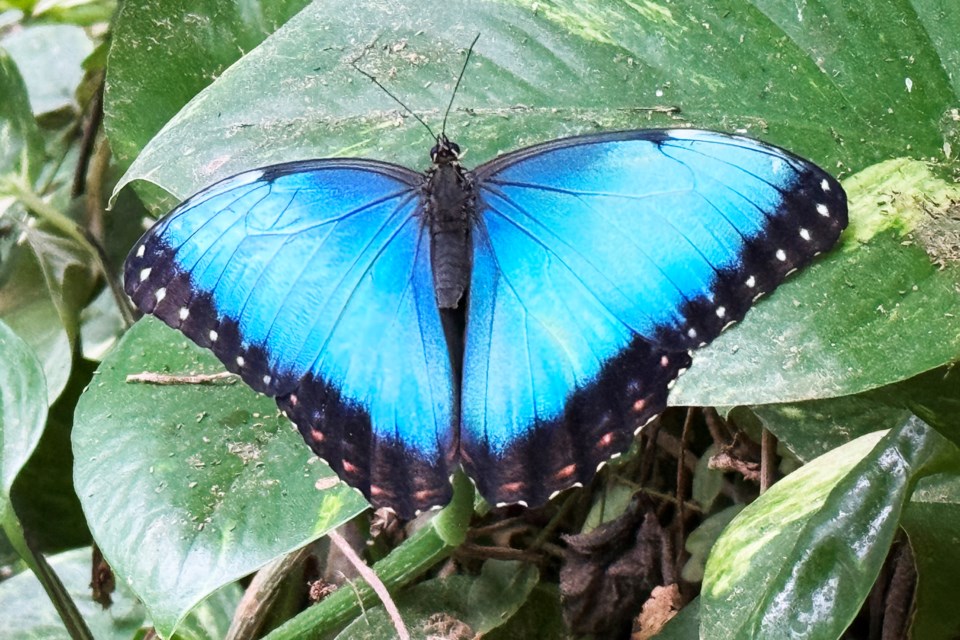Well, winter has finally arrived. And if it’s already too much for you to handle, vacationing in a tropical climate has always been a way to beat the cold-weather blues.
But what if you can’t afford to jet off to the Caribbean or Florida, or your work schedules just don’t allow for an extended time away during the winter?
Well, you could surround yourself with tropical plants, exotic wildlife and a warm, humid environment and it's not even that far away.
One great option is only about two hours away by car.
My wife Silvia and I recently took that road trip west along Highway 401, where we spent the day in the beautiful summer-like environment of the Cambridge Butterfly Conservatory.
Nestled in farm country just north of the 401, it’s a perfect way to distract yourself from freezing rain, snow and the general blah of the season.
Inside, you will find yourself immersed among thousands of beautiful, free-flying butterflies flitting around you and among the flora that makes up their home inside the building.
The indoor garden area is around 10,800 square feet in size, and also includes birds chirping and flying about, and fish in a small pond that is fed by a large waterfall, which is co-inhabited by turtles.
The conservatory opened on Jan. 26, 2001, and was previously known as Wings of Paradise Butterfly Conservatory until the name change in 2010.
We have been to the centre before, and it’s my wife’s happy place. And mine as well, really.
As a wildlife photographer, it’s so enjoyable to pull out my macro lens to capture the fine details and interesting patterns of the many different kinds of butterflies that call the conservatory home.
The in-house population of butterflies and moths consists of approximately 40 different species. Their butterflies and moths originate in either Costa Rica or the Philippines. The insects are sent to them weekly as pupae — also called butterfly chrysalids or moth cocoons — from butterfly farmers.
The conservatory says butterfly farming is a sustainable form of agriculture and ensures that natural populations of wild butterflies and moths are not depleted.
There is also a nursery there where you can see the young butterflies bust out of their chrysalids, dry their wings and leap into the air for their first flight.
It’s such a wonderful and beautiful sight to behold. Just the sound of the burbling stream and the waterfall is enough to lull you to sleep as you sit on a bench among the trees, and butterflies land on you.
It’s a little slice of heaven.
Other points of interest in the facility is a walk-through of mounted and live-insect galleries, featuring large stick insects, giant cockroaches, tarantulas, scorpions, and more. The conservatory is also home to bird species, such as zebra finch, quail, gouldian finch and Java sparrow.
And if you get hungry, there is the Chrysalis Cafe, which has a wide variety of snacks and lunch items on the menu.
Their gift shop boasts a wide range of educational books, toys, and beautiful mounted butterfly specimens available for sale.
You can even buy insect-based treats made with crickets, ants, and more, if you dare.
I did not — yet.
Kevin Lamb is a reporter-photographer with BarrieToday.



